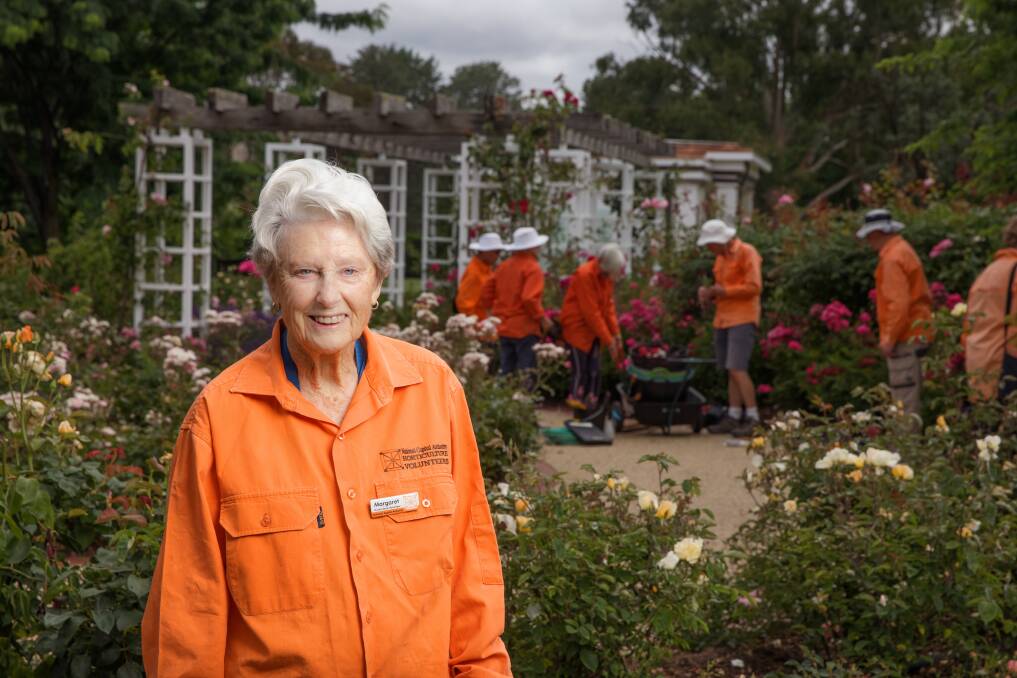
Couples marry in them, families picnic in them, public servants soak up some lunchtime rays there, parliamentarians of old used to seek refuge in them from the hubbub of the House.
Yet the Old Parliament House rose gardens remain a secret garden for many Canberrans, so many still unaware of this jewel in the heart of the National Triangle.
The good rain has done many things this year - turned the National Arboretum into a patchwork quilt of green above Canberra, restored the lakes to a reasonable level and also seen the rose gardens at Old Parliament House flourish.
"Walking through here a few weeks ago, the scent was just almost overwhelming," the National Capital Authority's manager of open space Michelle Jeffrey says, referring to the profusion of blooms.
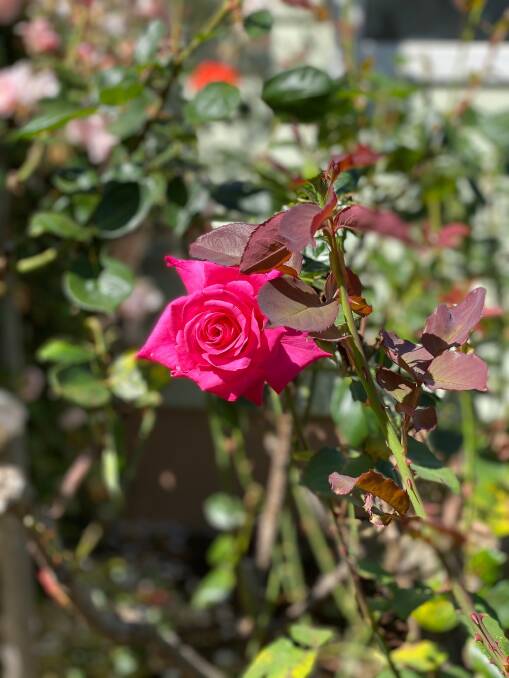
It's difficult to believe less than a century ago, this space was a barren former sheep paddock. There are now shady trees, lush lawn, a high hedge creating a sense of magical seclusion and four rose gardens:
- The Broinowski Rose Garden - English shrub roses
- The Rex Hazelwood Rose Garden - Early Asian and European roses, Australian Alister Clark roses
- The Ladies Rose Garden - Early Hybrid Tea Rose, examples of the donated roses of the1930s
- The Macarthur Rose Garden - Tea and China Roses
But it was a different story in 1927.
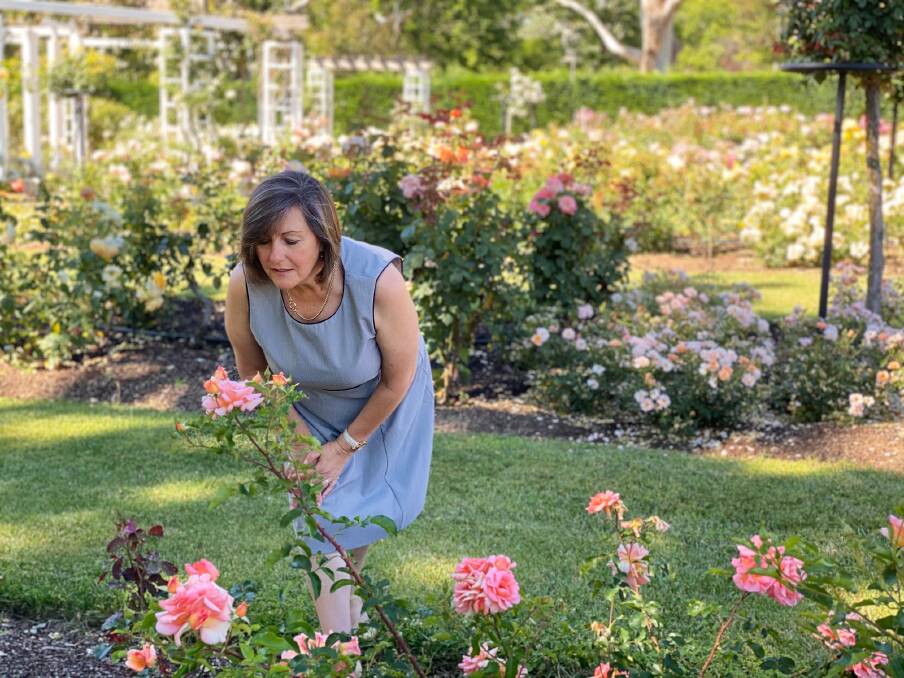
When Members and Senators arrived in Canberra for the opening of Provisional (Old) Parliament House in 1927 they were met with bare ground and one small hedge. The bush landscape stood in stark contrast to the temporary Parliament in Melbourne, where parliamentarians could escape to the established Treasury gardens.
In Canberra at Old Parliament House, sporting facilities - a bowling green, tennis courts and a cricket pitch - were quickly established for the exclusive use of parliamentarians. They are still there today and now available for use by the public.
The development of the rose gardens came several years later, with Joint House Department secretary Robert Broinowski taking up the idea with gusto.
A poet as well as a public servant, Broinowski's personality seemed to reflect that mix of the prosaic and the inspired.

Gavin Souter described him in Acts of Parliament, as a "a stickler about formality and propriety" who once banished poppy sellers from the Parliamentary Triangle on Remembrance Day and also banned the playing of ping-pong within Parliament House. As you do.
But when it came to establishing the rose gardens, Broinowski was all in, bringing them to life between 1931 and 1938.
He initiated the "design and planting of an open garden based on patterned rose and annuals display beds, set in lawns and with a minimum of trees".
Many of the roses were donated by rose societies, companies and individuals, and Parliament House staff.

Broinowski also successfully started a campaign in 1931 asking Australians to buy roses for the Rex Hazelwood garden at a cost of one shilling and fourpence each.
The gardens were designed by Rex Hazelwood, a former photographer turned landscaper.The Rex Hazelwood Rose Garden is the largest of the gardens and the first to be planted, in 1931.
In 1933, Broinowski persuaded Dame Mary Hughes, Dame Enid Lyons and other parliamentary wives to support the Ladies Rose Garden'. This was followed in 1937 with the Macarthur Garden.
In 1935 Broinowski invited the Japanese trading company Mitsubishi Shoji Kaisha to contribute 100 Japanese lily bulbs. Bulbs were also accepted from Holland and Britain, and trees from Canada and the USA. As these matured and flourished, the gardens on both sides were regularly used for formal events associated with the Parliament.

With the opening of the new Parliament House in 1988, the rose gardens were almost forgotten and fell into some disrepair until about 2000 when the National Capital Authority started to restore them.
In November 2002, Tamie Fraser, patron of the Old Parliament House Gardens reconstruction project launched a campaign seeking public support through rose patronage. Around 2400 people from around Australia became rose patrons, providing a contribution towards the reconstruction.
The reconstructed Old Parliament House Gardens were opened to the public on December 4, 2004. The National Capital Authority continues to manage the gardens on behalf of the Australian Government.
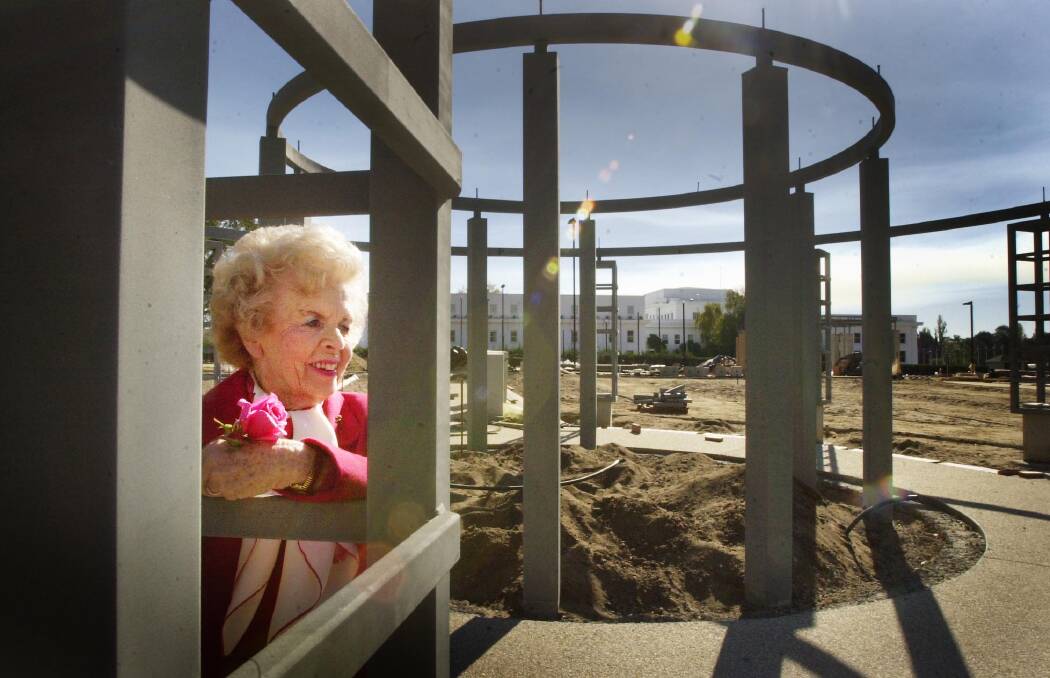
The Friends of the Old Parliament House Rose Gardens was formed in 2010 to promote the gardens as a national treasure.
The NCA has contractors looking after the gardens but also organises horticulture volunteers who keep the gardens looking their best.
Many of the volunteers come in year after year, often arriving early in the morning to weed, prune, mulch before the heat of the day takes hold.
The horticulture volunteers first started in the Old Parliament House Rose Gardens in 2005.
Among them is Sue Parr, 69, of Forrest, who has been a volunteer in the rose gardens for six years.
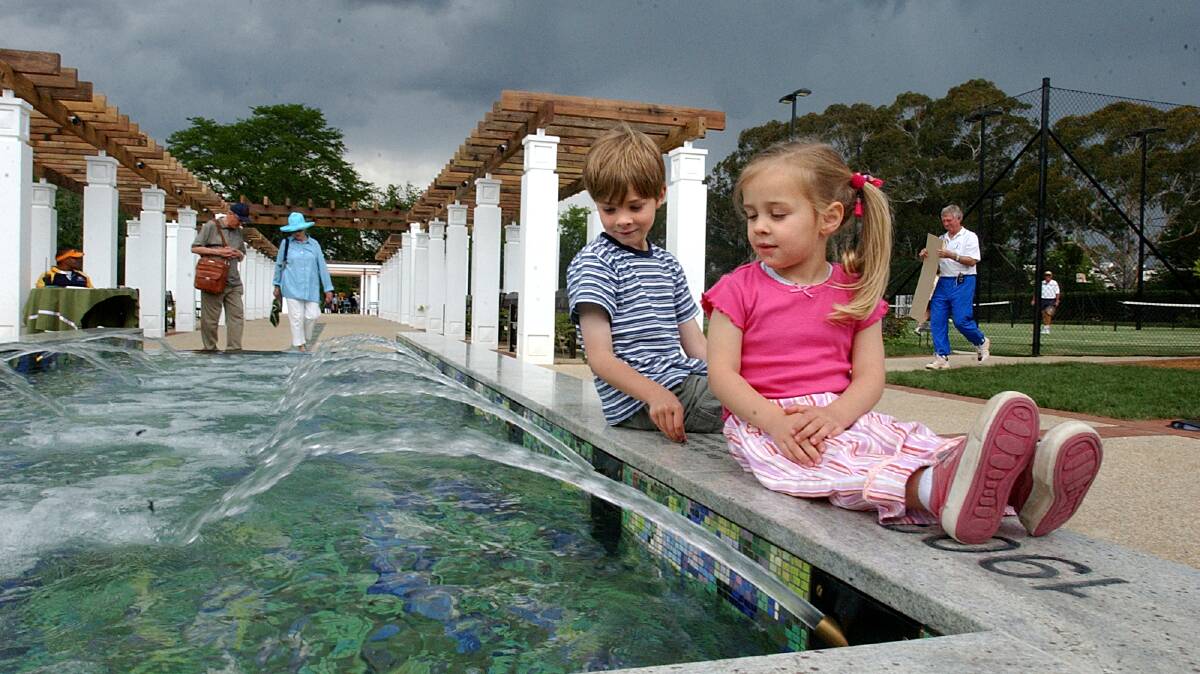
"I worked for 46 years in the public service and it is so beautiful, on retirement, to be outdoors," she says.
"I actually row on the lake. So on Thursdays, I leave home at 5.15, I go rowing and then I come across here. So Thursday mornings are just beautiful for me. I love weeding, so I'm quite happy to do the tidying up stuff.
"It's just a beautiful environment to be in and it's peaceful. And there is a lovely group of people involved as the volunteers, who I wouldn't have met any other way. So it's a combination of fresh air, beautiful plants, lovely spot. I mean, anytime you walk around anywhere here, you feel privileged."
And she has noticed the rain has made a difference to the roses.
"This year, they're really spectacular," she says.
"We're in the Rex Hazelwood gardens and a lot of the roses there only have the single flowering. The Ladies Gardens is flowering all the time and that's the one people mostly use for weddings. It's got the standard roses whereas where we are has got all the old roses and that's why they haven't been bred to flower twice.
"There's a lot of French roses, a lot of Chinese roses and it's almost the history of roses there. So by choosing where you go, you get quite difference experiences each time."
Canberra-born Margaret Cornwell, 86, of Yarralumla, has been a horticulture volunteer in the rose gardens for a decade. She was this year awarded a Medal of the Order of Australia for her service to the ACT community, including the gardens.
She volunteers every Thursday for two hours, arriving at 8am in the summertime and 8.30am in winter. And there's always a coffee afterwards.
"Well, I love gardening," she says, by way of explanation.
"And our group has just been so good. I think you're just lucky if you get the right group that suits you. Every Thursday, you think, 'I'd love to sleep in' but, no, it's the pull of the friendships you've made."
Mrs Cornwell inherited her love of gardening from her father Keith Archer, a Commonwealth statistician, who started the fete plant stall at Canberra Girls Grammar in 1938 when his daughter started attending the school. Mrs Cornwell took over the stall and still tends to the plants for the school fete.
She gets great joy from the rose gardens. "I just love seeing canary bird roses. It's the first rose that flowers every spring and we all just do a little walk around that bottom part of the garden to see whether the canary bird's in flower. It's a very old, single yellow rose, it's just beautiful," she said.
The National Capital Authority's Michelle Jeffrey said the roses gardens were back to their magnificent best this summer after being all but shredded in 10 minutes during the January 20 hailstorm
"This is the jewel of the crown in the assets we look after in the National Triangle," she says
"We take great pride in it. We have a lot of weddings here but also a lot of other events, Christmas parties, naming days, gender reveal parties, families just having a picnic together."
Ms Jeffrey said in those early days, it took more than a decade for the gardens to come to fruition and meet their aim of being a place of "quiet refuge" for the parliamentarians at a time when lush lawns, avenues of trees and even Lake Burley Griffin were still some decades into the future.
"As you can imagine, if you were a parliamentarian and all the gates were closed and you had special access, it would be that place of quiet reflection, just to smell the roses or read something. Take that time out," she said.
"Also particular visitors would come into the gardens and they'd be morning teas and afternoon teas and, I imagine, cocktails. It would have been fabulous."
In modern times, Ms Jeffrey said the friends and volunteers of the rose gardens were an invaluable resource. "They have this beautiful pride in and ownership of the gardens. They are personally invested in the presentation," she says.
Ms Jeffrey said as more residential development happened around the lake and in the inner-suburbs, open spaces like those in the Parliamentary Triangle became more like a backyard to nearby residents.
After a year of COVID disruption, the NCA also decided to waive fees for Christmas parties held in the Parliamentary Triangle, at locations such as the Old Parliament House rose gardens, Aspen Island and the Patrick White Lawns, as a gift to the community.
Ms Jeffrey said the NCA wanted the spaces used and was thrilled to see the rose gardens becoming a go-to meeting place.
"There's still a lot of people who don't know about them. It's like the secret garden," she says.







